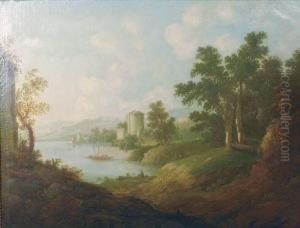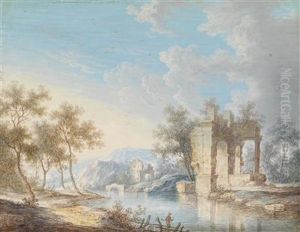Georg Christoph Ii Von Bemmel Paintings
Georg Christoph II von Bemmel was a German painter and engraver who lived during the Baroque period. Born in 1682 in Nuremberg, Bavaria, Bemmel was part of a family of artists and became known for his works in the Rococo style. He was the son of the painter Johann Christoph von Bemmel the Elder and followed in his father's footsteps, becoming an accomplished artist in his own right.
Despite the limitations on biographical details, we can piece together aspects of Bemmel's work and its historical context. The Baroque era, which spanned from the late 16th century to the early 18th century, was characterized by dramatic use of light and shadow, rich coloration, and dynamic composition. Bemmel, working in the latter part of this period, would have been influenced by these artistic trends, as well as the emerging Rococo style which favored lighter themes, delicate colors, and playful subjects.
Bemmel's oeuvre likely included religious motifs, portraits, landscapes, and genre scenes. His engravings would have served as a means of reproducing his own works or those of other artists, allowing for wider dissemination of images during a time when printmaking was an essential aspect of artistic practice. Unfortunately, specific works attributed to Georg Christoph II von Bemmel are not widely documented, making it difficult to provide a comprehensive analysis of his style and contributions to the art world.
Georg Christoph II von Bemmel passed away in 1755. His legacy, like that of many artists of the period, may have been overshadowed by more prominent figures of his time. Nevertheless, his participation in the rich tapestry of Baroque and Rococo art provides an example of the regional expressions of these influential artistic movements. Further research into archives, such as church records, and examination of period artworks might shed additional light on Bemmel's life and work.


